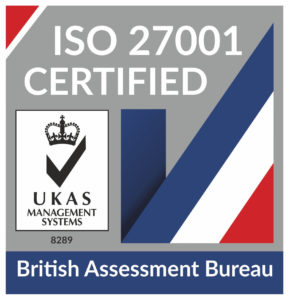
HaloITSM Guides
Documentation to assist with the setup and configuration of the HaloITSM platform
Step-by-Step Configuration Walk Through
In this guide we will cover:
- Clearing Trial Data
- Language
- Organisations
- Agents
- Teams
- Customers, Sites and Users
- Emails
- Email Templates
- Ticket Areas
- Ticket Views
- Ticket Types
- Service Level Agreements (SLAs)
- Self-Service Portal (SSP)
- Assets
- Notifications
- Reporting
Admin Guides:
- Agents
- Areas
- Email (General Settings)
- Email Templates
- General Settings (Assets)
- General Settings (Notifications)
- General Settings (Reporting)
- General Settings (Users)
- Language
- Organisation
- Self Service Portal
- Service Level Agreements
- Teams
- Ticket Types
- Views
Related Guides:
- Agents
- Altering Ticket Types
- Email Templates
- Languages in Halo
- Notifications
- Organisation Basics
- Self-Service Portal Customisation
- SLAs and Priorities
- Reports and Scheduling
- Ticket/Client Areas
- Users
- Views
This will go over the most commonly used configuration areas within Halo, and the basis of what can be done with them. Each area will have the related guides linked above that will go into further details about that area. The admin guides also show the configuration options, and what each setting does. It is recommended to read this guide to think about what you would like to set up in your instance, then follow the linked guides for a more in-depth method of doing so.
You will need to be an administrator in your Halo instance to follow this guide.
Clearing Trial Data
Halo comes with pre-configured data to fill out the system that allows an out-of-the-box experience to set up. You may however wish to remove these to configure your own. You can delete both ticket data and customer data in Configuration > Advanced Settings.
Note: These are only available whilst on a trial instance, and will only delete these areas. Any other deletion needs to be done manually.
Fig 1. Clear All Ticket Data and Clear All Ticket & Customer Data functions.
Language
You can change the language of your Halo instance in Configuration > Language, and choose from a list of pre-configured language packs or create your own. You can use the "Customise Language" to translate or change wording of certain areas of your instance.
Note: Changes made to the language pack will change the translation of that word wherever it appears in your system.
Fig 2. Language configuration.
Organisations
In Configuration > Organisation, you can set up the details about your company within Halo. Here you can set your company details such as address or billing information, create departments, and see agents added to that department in the organisational chart.
Fig 3. Organisation configuration.
Agents
Agents are the ticket resolvers in Halo, and the accounts your company members will use. To manually create agent profiles, go to Configuration > Teams & Agents > Agents > click the "New" button in the top right. You can also import using an XLS spreadsheet or through one of our integrations.
Fig 4. Agent list.
Clicking on an agent profile allows you to set their information, permissions or preferences. Agents can be assigned to departments and teams, given permissions or restricted access from certain areas of the system, and can set preferences about how they want their Halo to look.
Fig 5. Agent configuration.
Teams
Configuration > Teams & Agents > Teams is where you can create teams to assign your agents to by clicking the "New" button in the top right. You can set the information about that team, and assign agents to it in the "Agents" tab.
Fig 6. Teams configuration.
Customers, Sites and Users
Customers are your clients in Halo, and they have sites and users under them. Sites are the locations, and users are under the customer and site. You will also have a customer for your own organisation that is linked to it.
Users under Sites, then Sites under Customers.
Users are the accounts that log tickets to you.
Within the Customers module in the module bar on the far left, you can view your customer list. Selecting your customer allows you to see sites and users within this dropdown in the "Sites & Users" tab. You can create new ones manually here.
Fig 7. Sites and users area under a customer.
You can also import customers, sites and users in Configuration > Users > General Settings by using an XLS file, or through an integration such as Microsoft Entra ID (formerly Azure Active Directory).
Fig 8. "Import Users" and "Import Customers & Sites" buttons.
Emails
An email mailbox can be setup and configured in Configuration > Email. This is what Halo will use to send customer responses on tickets.
You can also set an "Email Start Tag" and "Email End Tag".
Fig 9. Email configuration.
Email Templates
Email templates can be used to send a preconfigured style of email when emailing out of Halo, and templates can be set against your ticket actions. Templates are edited or created in Configuration > Email > Email Templates. You can set the email subject and body that will be sent.
Fig 10. Email template example.
Ticket Areas
Ticket areas appear in the module bar on the left of your screen, and are where tickets that come into Halo are stored and worked on.
Fig 11. Ticket areas in the module bar.
After creating and naming an area, filters can be set. Tickets that fit all of the requirements will show.
Fig 12. Filters on a ticket area.
Ticket Views
A global ticket view can be configured in Configuration > Tickets > Views, but can be overridden in the Preferences tab of an agent's profile.
Fig 13. Setting a default ticket view.
Ticket Types
Ticket types can be set up in Configuration > Tickets > Ticket Types. Details such as name and whether end-users can log this type can be set. The Field list shows which fields can be added to the ticket, and which ones users can view or fill in when logging the ticket.
Fig 14. Incident ticket type.
Service Level Agreements (SLAs)
Configuration > Service Level Agreements > Service Level Agreements is where SLAs can be set up and edited. Priority levels are set in the "Priorities" tab, which sets response and resolution targets based on the time frame you aim to complete the ticket within.
Fig 15. SLA priorities.
Self-Service Portal (SSP)
The self-service portal is where your users log into Halo, and where they can log tickets. This can be customised with your company logo and colour scheme, and restrictions can be set about what users are able to see.
Fig 16. Self-service portal.
Assets
Assets can be manually created, or imported in Configuration > Asset Management > General Settings > Import Asset Types/Import Assets. You can assign assets to a customer, site and user, as well as set asset tags and serial numbers.
Fig 17. Asset list.
Notifications
Configuration > Notifications > Notifications allows you to create notifications for pop-ups, SMS or email based on an event in Halo. Triggers can be events such as ticket updates, re-assigning, etc, and can be set up as agent or user notifications.
Fig 18. Email notification example.
Reporting
Reports can be created or downloaded within the reporting suite based on your company needs. The Online Repository has numerous pre-made reports, and reports can be made with our query builders, so SQL is not needed if you do no have knowledge of it.
Fig 19. Reporting suite.
Popular Guides
- Asset Import - CSV/XLS/Spreadsheet Method
- Call Management in Halo
- Creating a New Application for API Connections
- Creating Agents and Editing Agent Details
- Departments and Teams
- Halo Integrator
- Importing Data
- Multiple New Portals with different branding for one customer [Hosted]
- NHServer Deprecation User Guide
- Organisation Basics
- Organising Teams of Agents
- Step-by-Step Configuration Walk Through



